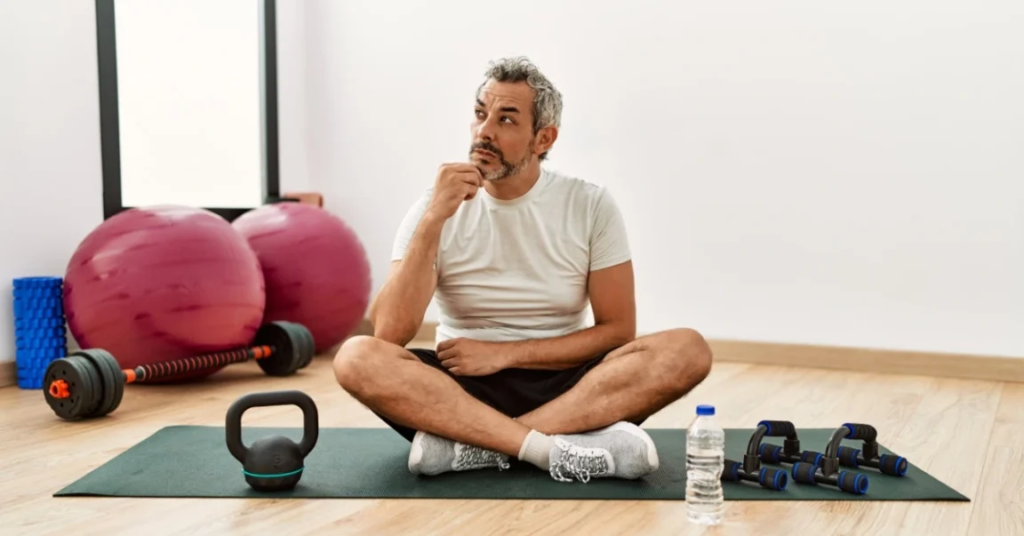As we age, the importance of recovery in our fitness routines becomes increasingly evident. While regular exercise is crucial for maintaining health and vitality, effective recovery strategies are essential for optimizing muscle repair, preventing injuries, and enhancing overall well-being. This blog explores the critical role of recovery in anti-aging fitness, focusing on stretching, foam rolling, and sleep as key components for muscle repair and long-term health.

Understanding the Role of Recovery in Anti-Aging Fitness
Recovery is a fundamental aspect of any fitness program, especially as we age. It involves allowing the body time to heal and adapt after exercise, ensuring that Unaging System muscles, joints, and tissues repair and strengthen. Effective recovery supports improved performance, reduces the risk of injury, and contributes to overall health and longevity.
Muscle Repair and Growth
Exercise, particularly resistance training, causes micro-tears in muscle fibers. Recovery allows these fibers to repair and grow stronger. Without adequate recovery, muscles may not fully repair, leading to diminished performance and increased risk of overuse injuries.
Injury Prevention
Proper recovery helps prevent injuries by allowing the body to adapt and repair. Overtraining or insufficient recovery can lead to muscle strains, joint pain, and other injuries. Recovery practices help reduce the risk of these issues and support overall musculoskeletal health.
Enhanced Performance
Effective recovery enhances performance by ensuring that muscles are fully restored and ready for the next workout. This leads to improved strength, endurance, and overall fitness, contributing to better long-term health and physical function.
Stretching: Enhancing Flexibility and Reducing Muscle Tension
Stretching is a crucial component of recovery that helps improve flexibility, reduce muscle tension, and support overall mobility. Incorporating stretching into your routine offers several benefits for anti-aging fitness.
Improved Flexibility
Regular stretching increases the range of motion in muscles and joints, which is particularly important as we age. Improved flexibility enhances overall movement quality and reduces the risk of stiffness and limited mobility.
Reduced Muscle Tension
Stretching helps alleviate muscle tension and soreness, promoting relaxation and recovery. By stretching the muscles worked during exercise, you can help release built-up tension and reduce post-workout discomfort.
Enhanced Circulation
Dynamic and static stretching improves blood flow to muscles, aiding in the delivery of essential nutrients and oxygen needed for muscle repair. Enhanced circulation supports faster recovery and reduces muscle soreness.
Incorporating Stretching into Your Routine
To maximize the benefits of stretching, incorporate both dynamic stretches before workouts and static stretches after exercise. Dynamic stretches, such as leg swings or arm circles, prepare the body for activity. Static stretches, held for 20-30 seconds, help relax muscles and improve flexibility post-workout.
Foam Rolling: Promoting Myofascial Release and Reducing Soreness
Foam rolling, or self-myofascial release, is a popular recovery technique that involves using a foam roller to massage muscles and fascia. This practice offers several benefits for muscle repair and overall recovery.
Myofascial Release
Foam rolling helps release tightness and knots in the fascia, the connective tissue surrounding muscles. By applying pressure to specific areas, foam rolling helps break up adhesions and improve tissue elasticity, leading to reduced muscle tightness and increased flexibility.
Reduced Muscle Soreness
Foam rolling can alleviate delayed onset muscle soreness (DOMS) by enhancing blood flow and reducing muscle inflammation. This technique helps speed up the recovery process and minimizes post-exercise discomfort.
Improved Mobility
Regular foam rolling improves joint and muscle mobility by reducing stiffness and increasing range of motion. Enhanced mobility supports better movement patterns and overall functional fitness.
Incorporating Foam Rolling into Your Routine
Use a foam roller for 1-2 minutes on each muscle group, focusing on areas of tightness or soreness. Perform foam rolling exercises after workouts or on rest days to support muscle recovery and maintain flexibility.
Sleep: The Cornerstone of Effective Recovery
Sleep is a vital component of recovery, playing a critical role in muscle repair, hormone regulation, and overall health. Quality sleep supports the body’s natural repair processes and contributes to long-term well-being.
Muscle Repair and Growth
During deep sleep, the body produces growth hormone, which is essential for muscle repair and growth. Adequate sleep ensures that this vital process occurs, helping to restore muscle fibers and promote strength development.
Hormone Regulation
Sleep regulates hormones involved in recovery, including cortisol and testosterone. Proper sleep helps maintain balanced hormone levels, reducing stress and supporting optimal recovery.
Overall health and Well-Being
Quality sleep contributes to overall health by supporting cognitive function, emotional well-being, and immune system performance. A well-rested body is better equipped to handle physical stress and recover from exercise.
Incorporating Healthy Sleep Habits
Aim for 7-9 hours of quality sleep per night to support effective recovery. Establish a regular sleep schedule, create a restful environment, and practice relaxation techniques to enhance sleep quality and promote overall health.
Creating a Comprehensive Recovery Plan
To develop a well-rounded recovery plan, consider the following steps:
Incorporate Stretching and Foam Rolling
Include stretching and foam rolling in your fitness routine to support flexibility, reduce muscle tension, and enhance recovery. Perform these practices regularly to maximize their benefits.
Prioritize Sleep
Ensure you get adequate, quality sleep to support muscle repair and overall health. Establish healthy sleep habits and prioritize rest to enhance recovery and performance.
Listen to Your body
Pay attention to how your body responds to exercise and recovery practices. Adjust your routine as needed to address any areas of discomfort or fatigue.
Seek Professional Guidance
Consult with fitness professionals or healthcare providers for personalized recommendations on recovery strategies and techniques. Professional guidance can help you develop an effective recovery plan tailored to your needs.
Conclusion: Embracing Recovery for Anti-Aging Fitness
Effective recovery is essential for optimizing anti-aging fitness, supporting muscle repair, and enhancing overall well-being. By incorporating stretching, foam rolling, and quality sleep into your routine, you can promote muscle repair, reduce soreness, and support long-term health. Embrace these recovery practices to ensure a balanced approach to fitness and enjoy a vibrant, active lifestyle well into your later years.
